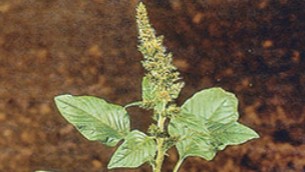Redshank (Amaranth)
Refer to the link below for more detailed information on specific amaranth species. Note: Persicaria maculosa is also referred to as Redshank, but is not dealt with here.

Description
Redshank is an erect, annual herb with branched stems to 1.5 m tall. The leaves of redshank are alternate, commonly dark green with a red tinge and slightly wavy on the edges. The flower spike is also erect, fairly dense and commonly red in colour, and may be up to 300 mm long. Redshank fruit is thin walled and contains a number of seeds.
Redshank can be confused with sIim amaranth (Amaranthus hybridus) however the flower head of slim amaranth is spikier in appearance.
Control
Both Tramat® and Betanal® Flow are registered for the control redshank in beet crops. Roundup Ultra® MAX, Roundup Ready® with Plantshield® and Roundup Ready PL are registered for the control of amaranth species in certain situations.
References
Agrobase Australia (Viewed April 2020), ‘Redshank (Amaranthus)’, https://agrobaseapp.com/australia/weed/redshank-amaranthus
Herbiguide (2014), ‘Redshank (Amaranthus)’, Herbiguide, http://www.herbiguide.com.au/Descriptions/hg_Redshank_Amaranthus.htm










